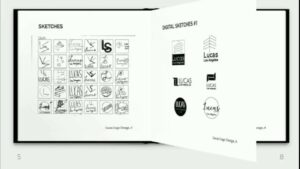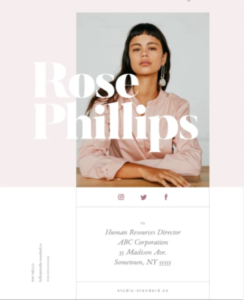How to Create a Process Book For Graphic Design
Every graphic designer needs to establish a methodology or approach to complicated design problems. A process book is meant to facilitate that process by applying your design strategy to a specific issue or challenge.
This article will detail critical sections of a process book, highlighting the information or visuals that should be included in each part. Designers can use these steps as a guide while constructing a graphic design process book.
Need help selecting a company?
Based on your budget, timeline, and specifications we can help you build a shortlist of companies that perfectly matches your project needs. Get started by submitting your project details.
What Is a Process Book?
A process book is a document that narrates the process of a design project. A compelling process book includes background information about the project needs to establish requirements for the designer.
Additionally, designers may employ a process book to communicate their process to clients concretely. For this reason, process books will also include any relevant research, sources of inspiration, sketches, wireframes, and final designs.
Everything included in your process book will narrate how you took the design challenge from requirements through to completion.
How to Create a Process Book for Graphic Design
- Identify the project need
- Highlight sources of inspiration
- Showcase completed designs and creative strategies
- Include contact information
1. Demonstrate Knowledge of the Project Need
Early in your documentation, be sure to include the project needs, details, and requirements. This will assure your clients that you understand the project thoroughly and are committed to reflecting their vision in your work.
This section should include project requirements, a short description of the client, and a statement surrounding the overall goals for the project.
For instance, if your client wants to appeal to Baby Boomers with their designs, you should document that in this section. Along with this note, brainstorm feelings or thoughts clients want their designs to portray. Any similar information you find during the discovery phase will belong in this section.
Although it may seem unnecessary to reiterate the project requirements to the client, it demonstrates that you understand their needs. Completing this step will leave you with an agreed-upon scope for the project, saving you from any miscommunications.
In fact, miscommunication is one of the top reasons that business partnerships fail. Communicating project needs in your process book will assure them that you’re on the same page.
Lastly, showcasing the requirements within the book serves as a starting point for the book’s narrative. After this project is complete, you’ll be able to look back to confirm that you meet the initial needs.
Similarly, prospective clients can visualize the course of this project clearly from start to finish.
2. Highlight Sources of Inspiration
After the discovery phase, it’s time to begin researching how to solve the design challenge at hand.
This section should display your research on how your team can effectively address the project goals. This may include competitor analysis, market research, or any additional information garnered from client interviews.
Alongside key research points, you should also begin finding and adding sources of inspiration to guide your design process. Your client may provide you with websites, logos, or graphics that represent the style or essence they would like to see in their graphic design work. In that case, include their recommended inspiration in this section.
Then, visually break down the features that evoke the feelings or reactions your client desires. Start brainstorming how you can leverage similar strategies in your graphic design work.
Suppose your client does not provide any visual sources of inspiration themselves. In that case, it will be your job to use requirements, briefings, and style descriptions to generate visual inspiration on your own. You may turn to photos, catalogs, or your past work to create this inspiration.
Here, you can also include sketches, blurbs, and unfinished ideas that may drive you toward final designs.

Source: Alejandra P. Hernandez
Nothing has to be polished or complete in this section! All you need to do is share the ideas that pushed you forward in your process.
3. Showcase Completed Designs & Creative Strategies
You may move forward to the solutions section after showing unedited concepts and ideas in your inspiration section. Here, you will display the finalized design solutions you came to throughout the project.
These final designs should feel complete, unlike the sketches you shared before. Typography should be consistent, and designs should be clean. You may wish to include each of the design options you provided your client in this section.
Additionally, this section should concisely present the main idea or solution you propose for your client. You shouldn’t have to do much explaining for your client to understand your designs at this point. However, it’s essential to use this section to drive your creative strategy home.
Clients must understand your rationale for your design and connect your design decisions back to their initial business problem.
4. Include Contact Information
This may seem like an obvious step, but you should always include your graphic design contact information on process books.
It’s up to you how and where you choose to include your information, but make sure it’s prominent and easy to digest for current and future clients at either the beginning or end of the process book.
The contact section should include your name, website, social media handles, and whatever else you wish to use for professional communication.

Source: Studio Standard
This section doesn’t need to be overdone from a design perspective. You can opt for a clean yet straightforward layout and type to make contacting you as direct and easy as possible. Including your contact information shows clients that you’re open to discussing your graphic design work.
Including contact information can turn your documentation-focused process book into a promotional brand portfolio that attracts new design clients.
Process Books Will Feature Your Design Skills
A process book is essential for both the communication and promotion of your design capabilities.
Designers must include a brief on project requirements, showcase inspiration and ideation, feature final designs, and have contact information to appeal to the needs of both current and prospective graphic design clients.
Need help selecting a company?
Based on your budget, timeline, and specifications we can help you build a shortlist of companies that perfectly matches your project needs. Get started by submitting your project details.